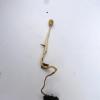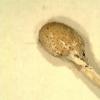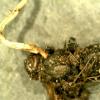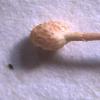
24-12-2025 17:08
Hulda Caroline HolteHello, I have found this propoloid ascomycete on

21-12-2025 09:32
Hello.A tiny ascomycete found embedded in wood in

21-12-2025 21:32
Pol DebaenstHello, Garden, Burgweg 19, Veurne, BelgiumOn 10/1

22-12-2025 23:38
Patrice TANCHAUDBonsoir, récolte sur un mur en pierre, apothéci

22-12-2025 00:47
Patrice TANCHAUDBonsoir, récolte à proximité du milieu dunaire
Cordyceps sphecocephalaon the other had should be 3-6 x 1.5-3 mm but on wasp.
This specimen was 4 x 3 mm
What should I look for to distinguish the species?
Thanks
Mal
here a key to this genus.
rgeards

the following file is updated:
http://www.ascofrance.fr/uploads/document/Catalogue-des-Cordyceps-CLL-4-0001-version-definitive-0001.doc
Regards,
Christian
Mal

note the passage in the document to which Christian has provided the link:
"Littérature : on trouve cette espèce sous le nom de C. dittmari, C. sphecocephala f. ditmarii (=ditmari), C. sphecophila, ou C. sphecocephala (Les récoltes européennes doivent être rapportées à Ophiocordyceps ditmari)." (my underlining - I think the problem is that some of the other names have been variously interpreted in the past).
cheers
Chris

Hi to all,
Traditionally, the specimens collected on wasps were named C. sphecocephala or O. ditmari and the specimens on flies C. forquignonii. We have studied both specimens, cultures and molecular data indicate that they are the same species.
Cordyceps forquignonii Quelet has never been collected since the publication and nobody really knows what it is. Holotype disappeared and we have only an illustration, which contains numerous incoherences.
Regards,
Christian



 Catalogue-des-Cordyceps-CLL-2-0001-0001.doc
Catalogue-des-Cordyceps-CLL-2-0001-0001.doc

